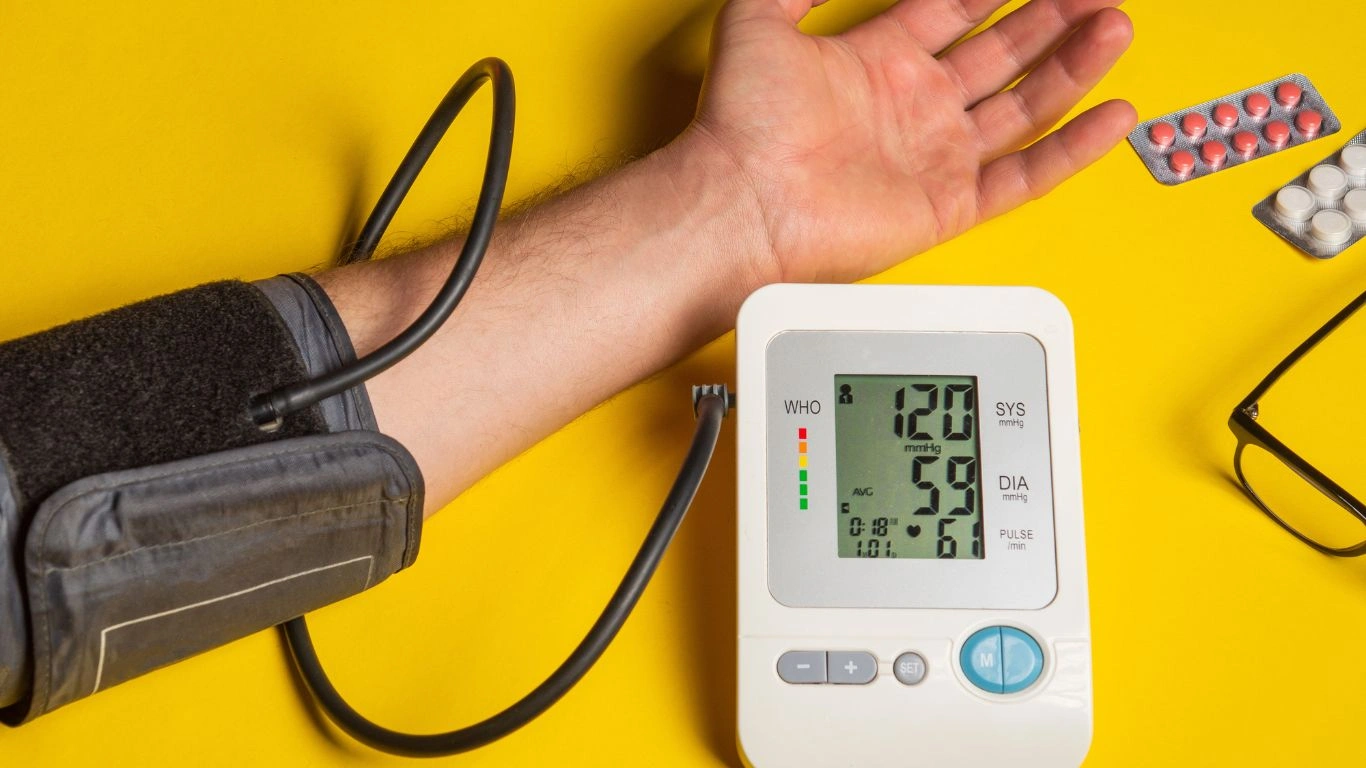The Shocking Link Between Inflammation and Hypertension You Must Know
When we talk about high blood pressure, most people immediately think of salt, stress, or maybe genetics. But there’s a crucial factor that often flies under the radar—the connection between inflammation and hypertension. And let me tell you, after years of working with patients battling high blood pressure, I’ve seen firsthand how chronic inflammation plays a sneaky but powerful role in keeping those numbers high. If you’ve been struggling with hypertension despite doing “everything right,” this could be the missing piece of the puzzle.
Understanding Hypertension and the Hidden Role of Inflammation

We all know hypertension is called the “silent killer” for a reason—no obvious symptoms, yet it’s wreaking havoc on the body. But here’s the thing: high blood pressure doesn’t just show up out of nowhere. It’s often the result of underlying issues, and one of the biggest culprits is chronic inflammation.
Inflammation isn’t always bad. It’s actually your body’s natural response to injury or infection. Think of it like a fire alarm—it goes off when there’s a problem, sending immune cells to the rescue. But when inflammation sticks around for too long (thanks to poor diet, stress, toxins, and more), it starts damaging blood vessels, making them stiff and narrow. And guess what happens next? Yep, your blood pressure skyrockets.
How Inflammation Triggers High Blood Pressure

1. Stiff Arteries and Increased Resistance
Healthy blood vessels are flexible, allowing blood to flow smoothly. But when inflammation kicks in, it causes tiny injuries inside the arteries. The body tries to “patch” these up with cholesterol deposits, leading to hardened, narrowed arteries. That means the heart has to pump harder, raising blood pressure.
2. Overactive Immune Response
Your immune system plays a huge role in blood pressure regulation. When it senses inflammation, it releases chemicals that can trigger vasoconstriction (tightening of blood vessels). This makes it even harder for blood to flow, putting extra strain on your heart.
3. Increased Sodium Sensitivity
Ever notice how some people can eat salty foods without a problem, while others immediately see a blood pressure spike? Chronic inflammation can make your body more sensitive to sodium by affecting kidney function. Instead of flushing out excess salt, the body holds onto it, leading to fluid retention and—you guessed it—higher blood pressure.
Common Causes of Chronic Inflammation That Lead to Hypertension

So, what’s fueling this ongoing inflammation? Here are some of the biggest offenders:
- Poor Diet: Highly processed foods, sugar, refined carbs, and unhealthy fats all contribute to systemic inflammation.
- Chronic Stress: When you’re constantly in “fight or flight” mode, your body releases stress hormones that trigger inflammation.
- Lack of Sleep: Poor sleep messes with your body’s ability to regulate inflammation, increasing your risk of hypertension.
- Sedentary Lifestyle: Regular movement helps reduce inflammation, while sitting for long periods has the opposite effect.
- Environmental Toxins: Pollution, smoking, and even some household chemicals can cause chronic inflammation.
If you’re nodding along thinking, “Yep, I check off a few of those boxes,” don’t worry—there’s good news. While inflammation can be a sneaky contributor to high blood pressure, it’s also something we can tackle head-on with the right lifestyle shifts. And trust me, I’ve seen patients make small changes that lead to big improvements in their blood pressure readings.
Breaking the Cycle: How to Reduce Inflammation and Lower Hypertension

Now that we’ve uncovered how chronic inflammation fuels hypertension, the next step is figuring out how to put out the fire. And here’s the good news—it’s absolutely possible. I’ve worked with countless patients who, after years of struggling with high blood pressure, saw real improvements simply by making a few key lifestyle changes. It’s not about overhauling your life overnight; small, sustainable steps can make all the difference.
The Anti-Inflammatory Diet: What to Eat and What to Avoid

1. Fill Your Plate with Anti-Inflammatory Foods
Food is one of the most powerful tools for fighting inflammation. What you eat every day can either fuel chronic inflammation or help your body heal. I always tell my patients to focus on whole, nutrient-dense foods that naturally calm inflammation.
- Leafy Greens: Spinach, kale, and Swiss chard are packed with antioxidants that help lower inflammation.
- Berries: Blueberries, strawberries, and raspberries are rich in polyphenols that fight oxidative stress.
- Fatty Fish: Salmon, sardines, and mackerel are high in omega-3s, which reduce inflammatory markers.
- Olive Oil: Extra virgin olive oil is a staple in heart-healthy diets like the Mediterranean diet for good reason.
- Nuts and Seeds: Almonds, walnuts, flaxseeds, and chia seeds provide healthy fats and antioxidants.
- Turmeric and Ginger: These spices have powerful anti-inflammatory properties and can easily be added to meals.
2. Cut Out the Inflammatory Triggers
Just as some foods help fight inflammation, others make it worse. The biggest culprits? Processed foods, excess sugar, and unhealthy fats.
- Refined Carbs: White bread, pasta, and pastries spike blood sugar, increasing inflammation.
- Processed Meats: Bacon, sausages, and deli meats contain harmful preservatives that contribute to inflammation.
- Trans Fats: Found in fried foods, margarine, and many packaged snacks, trans fats are a major inflammation trigger.
- Excess Sugar: Sodas, sweets, and sugary cereals lead to insulin resistance and chronic inflammation.
One of my patients, a 52-year-old woman with stubborn high blood pressure, made a simple switch—cutting out processed sugar and adding more anti-inflammatory foods. Within months, her blood pressure improved, and she had more energy than ever.
Stress Reduction: The Missing Piece of the Puzzle

1. Managing Stress to Reduce Inflammation
Let’s talk about stress—because, honestly, this is where so many people get stuck. I’ve seen patients who eat the perfect diet and exercise regularly, yet their blood pressure stays high. Why? Chronic stress keeps their body in a constant state of inflammation.
When you’re stressed, your body releases cortisol, which can cause blood vessels to constrict and increase inflammation over time. This is why managing stress is just as important as diet and exercise when it comes to controlling hypertension.
2. Practical Stress-Reduction Techniques
If meditation and yoga aren’t your thing, don’t worry. There are plenty of simple ways to lower stress and inflammation:
- Deep Breathing: Just a few minutes of slow, deep breaths can lower blood pressure almost instantly.
- Nature Walks: Getting outside and moving your body is an excellent stress reliever.
- Journaling: Writing down your thoughts helps clear mental clutter and reduce anxiety.
- Quality Sleep: Prioritizing 7-9 hours of sleep helps regulate stress hormones and inflammation.
I once worked with a patient who was on three different blood pressure medications, yet nothing seemed to help. The real issue? Chronic work-related stress. After incorporating relaxation techniques and setting boundaries at work, his blood pressure levels finally started improving.
Case Studies & Real-Life Examples

Over the years, I’ve worked with many patients who struggled with hypertension that just wouldn’t budge—until we addressed the underlying inflammation. Let me share a couple of real-life examples that might resonate with you.
Case Study #1: The Stressed-Out Executive
John, a 48-year-old executive, came to me frustrated. Despite being on two different blood pressure medications, his readings were still high. His diet was decent, and he exercised a few times a week. But when we dug deeper, we uncovered the real culprit—chronic stress and poor sleep.
We worked together to implement stress management strategies, including a 10-minute morning meditation routine and setting better work-life boundaries. Within three months, his blood pressure dropped significantly, and he even reduced his medication dosage under his doctor’s supervision.
Case Study #2: The Sugar Lover with Chronic Inflammation
Mary, a 55-year-old woman, had been battling hypertension for years. She loved her morning pastries and afternoon sodas but never connected them to her health issues. When we ran inflammation markers, they were off the charts.
She committed to reducing sugar, swapping refined carbs for whole foods, and adding anti-inflammatory foods like leafy greens and omega-3-rich fish. The results? Not only did her blood pressure improve, but she also felt more energetic and lost 15 pounds effortlessly.
Key Takeaways: What You Need to Remember

- Chronic inflammation is a hidden driver of hypertension. Stiff arteries, an overactive immune system, and increased sodium sensitivity all contribute to high blood pressure.
- Diet plays a crucial role. Focus on anti-inflammatory foods like leafy greens, berries, fatty fish, and olive oil, while cutting back on processed foods, sugar, and unhealthy fats.
- Stress and sleep matter just as much as diet. High cortisol levels from chronic stress can keep your blood pressure elevated. Prioritize relaxation techniques and quality sleep.
- Small changes lead to big results. You don’t need to overhaul your life overnight—start with manageable steps, like swapping sugary drinks for herbal tea or adding a daily walk.
FAQs
Q: Can inflammation cause high blood pressure even if I’m not overweight?
A: Absolutely! While excess weight is a risk factor, inflammation can impact blood pressure regardless of your weight. Poor diet, stress, and lack of sleep can all trigger inflammation, even in people who are at a “normal” weight.
Q: How do I know if I have chronic inflammation?
A: Some common signs include fatigue, joint pain, digestive issues, and frequent infections. Blood tests like CRP (C-reactive protein) and ESR (erythrocyte sedimentation rate) can measure inflammation levels.
Q: Are supplements helpful for lowering inflammation?
A: Some supplements, like omega-3 fatty acids, turmeric, and magnesium, can help. But they should complement—not replace—a healthy diet and lifestyle.
Bonus: Additional Resources & DIY Tips
DIY Anti-Inflammatory Tea
Try this simple anti-inflammatory tea to support heart health:
- 1 cup hot water
- 1/2 tsp turmeric
- 1/2 tsp ginger
- 1 tsp honey (optional)
- Fresh lemon juice
Mix and enjoy daily for a natural way to reduce inflammation!
Recommended Books & Articles
- American Heart Association – Hypertension Resources
- NIH Research on Inflammation & Cardiovascular Health
- Mayo Clinic – Natural Ways to Lower Blood Pressure
Appendix
Table: Inflammatory vs. Anti-Inflammatory Foods
| Inflammatory Foods | Anti-Inflammatory Foods |
|---|---|
| Processed meats | Fatty fish (salmon, sardines) |
| Sugary snacks & sodas | Berries, citrus fruits |
| Refined carbs (white bread, pasta) | Whole grains (quinoa, brown rice) |
| Fried foods, trans fats | Olive oil, nuts, seeds |
Disclaimer
This article is for informational purposes only and is not a substitute for professional medical advice. Always consult with a healthcare provider before making any changes to your diet or lifestyle.
Call to Action
Have you struggled with high blood pressure and inflammation? I’d love to hear your experience! Drop a comment below or share this article with someone who could benefit from these insights.
And if you’re ready to take control of your health, start today with one small change. Your heart will thank you!

Dr. Gwenna Aazee is a board-certified Internal Medicine Physician with a special focus on hypertension management, chronic disease prevention, and patient education. With years of experience in both clinical practice and medical writing, she’s passionate about turning evidence-based medicine into accessible, actionable advice. Through her work at Healthusias.com, Dr. Aazee empowers readers to take charge of their health with confidence and clarity. Off the clock, she enjoys deep dives into nutrition research, long walks with her rescue pup, and simplifying medical jargon one article at a time.






